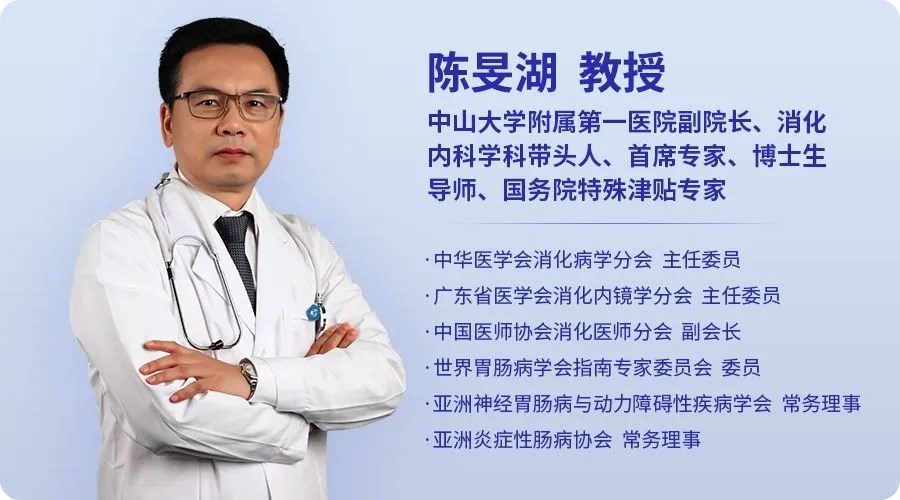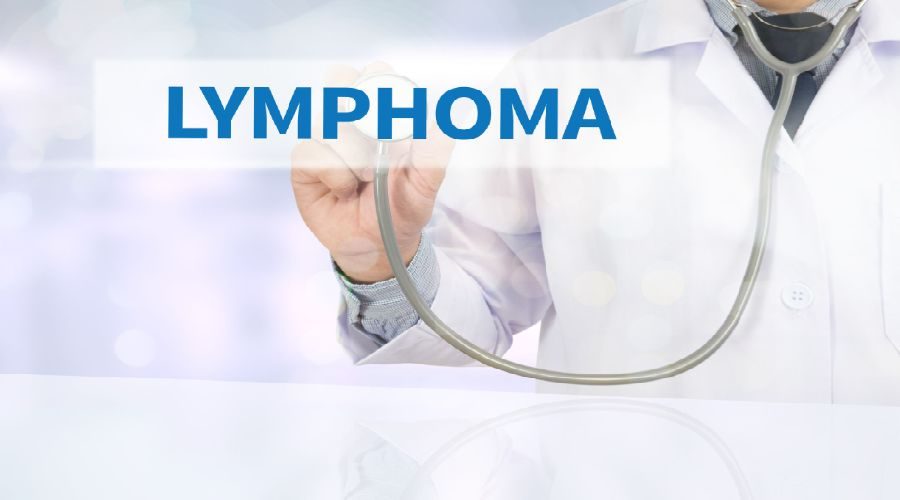編者按:
ECCO 2019如約而至,在此次大會期間有關IBD治療領域的新葯研究進展依舊是各路學者的關注焦點。為了不放過任何一個學習機會,在此我們特邀了國內學術大咖對最新公布的研究結果進行點評,希望通過點評能使更多中國醫生聽到來自國際學術舞台最新聲音。上海交通大學醫學院附屬仁濟醫院冉志華教授應邀對ECCO 2019會議上最新公布的抗-IL-23單抗研究進展進行解析。

冉志華教授:
克羅恩病(Crohn』s disease, CD)是一種發病機制不明,可能與黏膜免疫、飲食習慣、腸道菌群以及遺傳因素相關,最終導致主要表現為腹痛、腹瀉的腸道黏膜病變[1]。腫瘤壞死因子(tumor necrosis factor, TNF)為其發病機制中最為關鍵的靶點之一,目前包括英夫利西單抗、阿達木單抗等多種針對TNF靶點的生物製劑是目前治療中-重度活動性CD的主要有效藥物[2-5]。然而,大約仍有1/3的患者對抗-TNF抑製劑原發性失應答,並且有近40%的患者會由於免疫原性、藥物清除以及不良事件等對抗-TNF抑製劑繼發性失應答或不耐受[6]。這使得目前臨床上仍迫切需要針對CD發病機制研發新型靶點藥物,而IL-12/23炎症通路則是目前新靶點藥物的研發關注重點。
IL23與Th17在克羅恩病發病機制中的作用
固有及適應性免疫應答在維持腸內穩態中起著至關重要的作用。其中包括Th1、Th2和Th17在內的CD4+T細胞過度活化與增殖會破壞腸道內穩態從而導致病理性的腸道炎症[7]。而包括IL-12、IL-23、IL-27和IL-35在內的IL-12家族細胞因子在T細胞應答中起到至關重要的作用[8]。其中IL-12與IL-23是一類異二聚體的細胞因子,它們都由共同的p40亞基與相應的p35和p19亞基組成[9]。兩者均可與二聚體受體結合,IL-12結合後可促進Th1細胞分化隨後促進IFN-γ的釋放[10]。 IL-23可以通過激活RORγt受體進而促進Th17細胞分化,並釋放下遊的包括IL-17、IL-6和TNF在內的促炎因子[11,12]。
IL-23抑製劑研發進展
Risankizumab(RZB)是一種可靶向結合IL-23p19亞基的人源化IgG1單克隆抗體[13]。在一項治療斑塊狀銀屑病的I期隨機、雙盲、安慰劑對照研究結果顯示[14],靜脈給葯的平均濃度-時間曲線下面積(AUC0-inf)值為2.93~1650 μg/(d·mL),並同時呈現出以劑量成比例增加。靜脈給葯的半衰期(t1/2)為20~28天。皮下注射和靜脈注射兩種給藥方式的平均幾何劑量標準化AUC0-inf的比率為59%,顯示了皮下注射具有同樣較好的生物利用率。在一項研究治療CD的隨機、雙盲、安慰劑對照II期研究中顯示[15],在第12周時有36.6%(15/41)的600 mg IV RZB的患者達到主要研究終點(臨床緩解率,CDAIp= 0.0252)。這項研究證實了RZB治療中-重度活動性CD的潛在療效。在隨後的開放標籤維持試驗中,有71.0%(44/62)的患者在52周時達到臨床緩解[16]。目前研究RZB治療中-重度活動性CD療效與安全性的III期臨床試驗也正在進行中。其他包括Brazikumab、Guselkumab等多種IL-23抑製劑也同時正在積極研發。

圖1 Risankizumab CD II期臨床試驗方案
ECCO 2019最新熱點:Risankizumab CD
本次ECCO會議上A. Salas等人以壁報形式公布了RZBIIb期誘導期最新研究結果[17],第12周時RZB治療組的血漿生物標誌物水準較安慰劑組在12周時有顯著的下降(圖2)。在研究終點時所有血漿標誌物在治療組和安慰劑組之間均具有顯著的統計學差異。

圖2 在第12周時血漿生物標誌物下降水準
p-值:*、**、***、****,分別為p
在另外一篇由E. Louis等人公布的II期臨床試驗最新結果的壁報中顯示了[18],在第12周時RZB治療組(200 mg及600 mg iv)的IBDQ應答率要顯著高於安慰劑組。在接受延長誘導治療患者在26周時相較於12周的IBDQ結果有所改善。並且這種改善的IBDQ結果能在繼續接受RZB治療的第52周得到維持(圖3)。

圖3 受試者在第12周、26周和52周時IBDQ應答率(NRI)*
p
結語:
現今新型靶點生物製劑依舊是IBD治療領域的研究關注熱點,IL-23p19人源化IgG1單抗Risankizumab在II期臨床試驗達到主要研究終點,取得了較為理想的結果,也因此使該項藥物的研發進度推至III期。目前該項III期研究在全球正在積極進展中,而值得欣喜的是中國也有望加入這項III期臨床試驗中,我們也期待中國的加入能推動研究進展並使得這一新葯能更早地惠及中國患者,同時也通過此項目體現中國消化科醫生的學術水準,在國際舞台上唱出「中國好聲音」。
參考文獻:
[1]. Baumgart D C, Sandborn W J. Crohn"s disease[J]. The Lancet, 2012, 380(9853): 1590-1605.
[2]. Duijvestein M, Battat R, Casteele N V, et al. Novel therapies and treatment strategies for patients with inflammatory bowel disease[J]. Current treatment options in gastroenterology, 2018, 16(1): 129-146.
[3]. Hanauer S B, Feagan B G, Lichtenstein G R, et al. Maintenance infliximab for Crohn"s disease: the ACCENT I randomised trial[J]. The Lancet, 2002, 359(9317): 1541-1549.
[4]. Hanauer S B, Sandborn W J, Rutgeerts P, et al. Human anti–tumor necrosis factor monoclonal antibody (adalimumab) in Crohn』s disease: the CLASSIC-I Trial[J]. Gastroenterology, 2006, 130(2): 323-333.
[5]. Colombel J F, Sandborn W J, Rutgeerts P, et al. Adalimumab for maintenance of clinical response and remission in patients with Crohn』s disease: the CHARM trial[J]. Gastroenterology, 2007, 132(1): 52-65.
[6]. Roda G, Jharap B, Neeraj N, et al. Loss of response to anti-TNFs: definition, epidemiology, and management[J]. Clinical and translational gastroenterology, 2016, 7(1): e135.
[7]. Huang Y, Chen Z. Inflammatory bowel disease related innate immunity and adaptive immunity[J]. American journal of translational research, 2016, 8(6): 2490.
[8]. Gee K, Guzzo C, Mat C, et al. The IL-12 family of cytokines in infection, inflammation and autoimmune disorders[J]. Inflammation & Allergy-Drug Targets (Formerly Current Drug Targets-Inflammation & Allergy), 2009, 8(1): 40-52.
[9]. Oppmann B, Lesley R, Blom B, et al. Novel p19 protein engages IL-12p40 to form a cytokine, IL-23, with biological activities similar as well as distinct from IL-12[J]. Immunity, 2000, 13(5): 715-725.
[10]. Iwakura Y, Ishigame H. The IL-23/IL-17 axis in inflammation[J]. The Journal of clinical investigation, 2006, 116(5): 1218-1222.
[11]. van de Wetering D, de Paus R A, van Dissel J T, et al. IL-23 modulates CD56+/CD3? NK cell and CD56+/CD3+ NK-like T cell function differentially from IL-12[J]. International immunology, 2008, 21(2): 145-153.
[12]. Geremia A, Arancibia-Cárcamo C V, Fleming M P P, et al. IL-23–responsive innate lymphoid cells are increased in inflammatory bowel disease[J]. Journal of Experimental Medicine, 2011, 208(6): 1127-1133.
[13]. Singh S, Kroe-Barrett R R, Canada K A, et al. Selective targeting of the IL23 pathway: generation and characterization of a novel high-affinity humanized anti-IL23A antibody[C]//MAbs. Taylor & Francis, 2015, 7(4): 778-791.
[14]. Krueger J G, Ferris L K, Menter A, et al. Anti–IL-23A mAb BI 655066 for treatment of moderate-to-severe psoriasis: Safety, efficacy, pharmacokinetics, and biomarker results of a single-rising-dose, randomized, double-blind, placebo-controlled trial[J]. Journal of Allergy and Clinical Immunology, 2015, 136(1): 116-124. e7.
[15]. Feagan B G, Sandborn W J, D"Haens G, et al. Induction therapy with the selective interleukin-23 inhibitor risankizumab in patients with moderate-to-severe Crohn"s disease: a randomised, double-blind, placebo-controlled phase 2 study[J]. The Lancet, 2017, 389(10080): 1699-1709.
[16]. Feagan B G, Panes J, Ferrante M, et al. Efficacy and Safety of Open-Label Maintenance Therapy with Subcutaneous Risankizumab in Patients with Moderateto-Severe Crohn"s Disease[J]. Gastroenterology, 2017, 152(5): S1310.
[17]. A. Salas, K. M. Grebe, N. Powell, et al. Systemic and tissue modulation of IL23 pathway biomarkers in a phase 2 study of risankizumab in patients with Crohn』s disease. 14th Congress of ECCO Inflammatory Bowel Diseases. P315
[18]. E. Louis, W. J. Sandborn, G. D』Haens, et al. Effect of risankizumab on improved and sustained quality of life in patients with moderate to severe Crohn』s disease: Phase 2 trial results. 14th Congress of ECCO Inflammatory Bowel Diseases. P373
關注消化界,每天更精彩!






